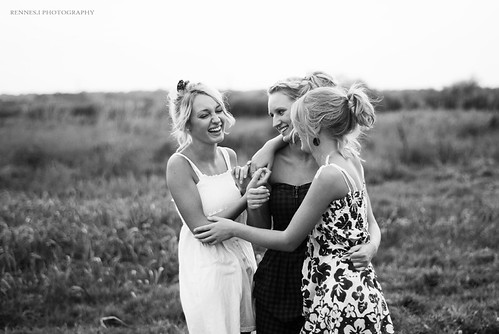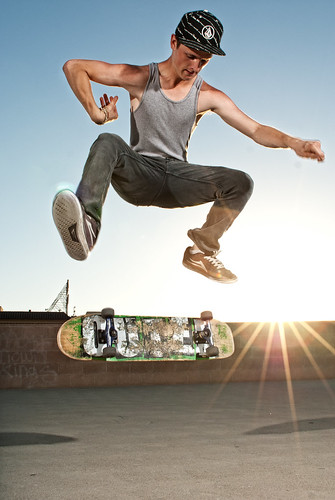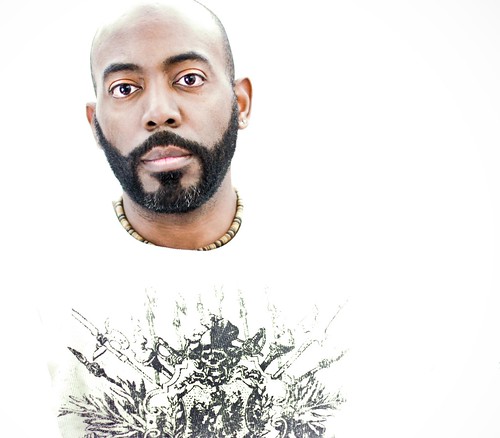How to Capture Portraits That Are More Than Just Snapshots
t seems some photographers have a natural inclination for portraiture; nearly everything they do has all the elements of a great portrait and they make it seem so easy. I don’t know if there’s a gene that makes some photographers better portraitists than others, or if it comes down to practice and more practice. For the sake of argument, let’s go with practice, that way the rest of us have hope of becoming good portrait photographers someday.
The tips below should help you out a bit along your journey to achieve that very goal. These tips are less about technical information like camera settings and flash ratios, and more about the practical intangibles that lie at the center of portrait photography. Read on.
1. Establish a Connection
Remember, this is portrait photography, people pictures. So learn to see your subject as more than just a subject. Exchange stories, share a laugh. If the person behind the camera can establish a good rapport with the person in front of the camera, everything else is more likely to fall into place. Lens focal lengths and camera settings and lighting patterns aren’t insignificant factors, but an air of trust and comfort between subject and photographer will prove invaluable when it comes to injecting a portrait with that “something special” quality.
2. A Little Flattery Goes a Long Way
Closely related to the idea of establishing a connection, you can boost your subject’s confidence by engaging in a little flattery. Think of things from the subject’s perspective for a moment. It’s likely that they have spent quite a bit of time preparing for their session, knowingly going into something that falls flatly out of their comfort zone. Imagine how much more unsettling it can be to have someone pointing a camera at them and not knowing what the person doing the pointing is thinking. So tell them how great they look. Be enthusiastic with your compliments. The boost of confidence your subject experiences will be apparent in the final images.
3. Shoot in Your Subject’s Preferred Environment
A portrait shoot can take place anywhere. I’m sure no one would object to a beach dotted with palm trees. And studios with muslin backdrops have their place. Neither, however, is a requirement for a successful photo shoot. In fact, shooting in and around a subject’s home might be ideal, as the familiarity of the location will put them at ease and allow their personality to come through more easily. Forcing people to sit under hot lights or endure the frenetic flashing of strobes when they clearly are uncomfortable is counterproductive. And not very nice. So go to their happy place with them, wherever that may be, and you’ll get portraits that are a truer reflection of their personality.
4. Capture the Unscripted Moments
It’s easy to get caught up in the routine of posing your subject and taking the shot; pose, shoot, pose, shoot, and call it a day. In some respects, that’s just the way it goes; that’s how most portraits are made. But there’s always something else there, something you don’t want to overlook or dismiss. At some point there may arise an occasion when you’re not “formally” shooting — perhaps you’re changing locations or just about to wrap up the session. These so-called camera-down moments, when the subject doesn’t feel the weight of the lens aimed at them, provide an opportunity to sneak in a few quick shots. The spontaneity of these candid-like shots can reveal the authenticity that portrait photographers crave.
5. Shoot in Aperture Priority
Seasoned photographers and self-proclaimed experts will probably insist on shooting fully manual, which is perfectly fine. But if you’re someone who is looking to be unencumbered by technical concerns without forsaking your creative vision, then use aperture priority mode. In order to isolate the face/facial features you’ll want to set a relatively small aperture, typically f/2.8 to f/5.6. Your camera will then choose the appropriate shutter speed. If you find the shutter speed isn’t quite fast enough to avoid blur at your chosen aperture, just boost ISO. Given the quality of most current DSLR sensors, jumping from ISO 100 to ISO 400 won’t negatively affect your images.
6. Don’t Fear Your Own Creativity
Don’t let rules put a damper on your output. There’s no reason you should be content with making photos that you can’t get excited about. Get creative with your portraiture:
- Use non-traditional focal lengths – Wide angle lenses aren’t flattering to faces, but used the right way you can create some unique, eye-catching portraits; also use wide angle lenses for full body portraits or environmental portraits.
- Use creative framing – Instead of placing your subject in front of a wall or studio backdrop, use something more dynamic; windows, doorways, trees, all work well as framing devices.
- Overexpose – You don’t need an elaborate lighting setup to get a clean, bright, high-key look. Even it’s not a “true” high-key shot, slightly overexposing can give your image a nice bit of pop.
- Introduce a prop – It can be anything: a flower to hold, a chair to sit on, anything that might put your subject at ease. Plus, the prop adds an additional dimension to the photo.
- Creative post-processing – The sky is the limit. Aside from the standard routine of sharpening eyes and removing blemishes, you can introduce textures, create double exposures, or use color isolation.
- Look beyond the face – Portraits don’t always have to be all about faces. Try focusing your attention on another part of the body.
In short, simply follow your creative instinct and know that becoming a good portrait photographer is well within your reach. Keep shooting.











No comments:
Post a Comment
Note: Only a member of this blog may post a comment.